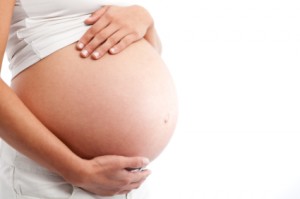What Parental Factors Are Associated with Autism?

A child’s first environment, the womb, has been implicated in the development of autism. A multitude of prenatal risk factors have been associated with ASD. Here we describe and discuss few of the prenatal risk factors.
Immune function
Immune system abnormality has been suggested as a prenatal risk factor for Autism. The first evidence arose from anti-fetal brain antibodies that were discovered in the blood of mothers of children with autism 1. Once across the placenta, these antibodies, in concert with genetic vulnerabilities, may impair neurodevelopment. These findings provided evidence for the immune system hypothesis, suggesting a transfer of maternal antibodies across the placenta. Additional evidence emerged from studies in animal models that exhibited behavioral changes in offspring following in-utero exposure to pooled immunoglobulin G from mothers of children with autism. [AutDB] However, a subsequent study failed to identify these same antibodies in the serum of children with Autism Spectrum Disorders 2. Due to the importance of maternal antibodies and their complex interactions with the environment, the role of maternal antibodies in autism is far from clear.
Infectious Agents
One question under debate by researchers is whether infections during pregnancy could increase the risk of ASD in the resulting offspring. Multiple studies have investigated this theory, with conflicting results.
A series of studies in the 1970s linked infection during pregnancy with an increased risk for ASD in the baby. A 1971 longitudinal case study of 243 children with Congenital Rubella Syndrome (CRS) first reported the strong association between CRS and autism, reporting 10 cases of strict autism and 8 cases of "partial autism.”3 CRS is hypothesized to lead to the development of autism by dramatically raising the circulating levels of maternal cytokines, thereby damaging the fetal brain. Cytomegalovirus (CMV) infection was associated with autism in a 1978 case report.7 Following this initial report, additional case reports have also described an association between congenital CMV association and autism.8
The first report associating maternal influenza infection as a risk factor for autism was published in 1979.4 However, a subsequent study failed to replicate the findings.5 More recently, a 2010 epidemiological study found that viral infection during pregnancy, specifically during the first trimester, increased autism risk.6 Moreover, it was found that influenza was the viral agent in 50% of the children with autism whose mothers experienced a first trimester viral infection.
Congenital viral infections might increase the risk of autism spectrum disorders by increasing the levels of circulating maternal cytokines, thereby affecting fetal brain development.9 In fact, maternal viral infections have been called the principal non-genetic risk for autism.4 Although the mechanisms of action for infectious agents are not fully understood, mouse models of gestational viral infection have been established which show significant alterations of offspring behavior [AutDB].
To better understand a larger trend in smaller studies, researchers will sometimes conduct a meta-analysis – combining the results of the studies to create a bigger picture of the study effect in action. This statistical approach is especially useful when individual reports disagree in their conclusions.
In 2016, one such meta-analysis of 15 studies examined the link between maternal infections and ASD. The researchers evaluated data from more than 40,000 ASD cases studied between 2004 and 2015.20 Within the larger group, individual studies focused on viral, bacterial and fungal infections impacting women during all three trimesters of pregnancy. In combining all these data, the researchers observed a 12 percent increase in the risk of an ASD diagnosis in the offspring of mothers who experienced an infection during pregnancy. The effect was most pronounced among expectant mothers who were in their second trimester of pregnancy, whose infections led to hospitalization, and among those with bacterial infections of the skin or urinary tract. In contrast to previous studies, viral infections during pregnancy and infections during the first trimester were not associated with increased ASD risk.
The conflicting evidence linking viral infections during pregnancy and ASD highlights the ongoing process of scientific discovery. With large enough sample sizes, future studies could more definitively prove or disprove that link—or possibly find a subset of individuals who are more susceptible to infection in the womb.
Parental Age
Advanced maternal and paternal age at the time of conception has also been positively correlated with autism 10. Epidemiological studies have reported an association between advanced paternal age and the increased risk of autism and Autism Spectrum Disorders 11, 12, 13, 14, 15. A recent study of a birth cohort in Sweden found that the children of fathers older than 50 were 2.2 times more likely to have autism than the children of fathers younger than 29, providing the strongest epidemiological evidence to date that advanced paternal age is an autism risk factor 16. Although the biological mechanisms are not well understood, one theory states that the effects are due to an increased occurrence of spontaneous mutations. With increasing age the number of mutations increases causing greater genetic variability in the offspring. An alternative theory cites epigenetic dysfunction as the cause of the parental age effects. To further elucidate the mechanism of action, advanced paternal was modeled in mice, resulting in subtle behavioral and neuroanatomical changes. [AutDB]
Perinatal complications
An association between perinatal factors and autism was first reported by case reports over 40 years ago 17. A retrospective examination of medical records indicated that the children with autism were more likely to have experienced at least one perinatal complication. The most significant effect was observed for emergency caesarian section (an indication of fetal trauma/distress), which was 5-6 times more common in the autistic study population.
Currently, there are over 60 case-controlled, statistically validated epidemiology studies examining the perinatal and neonatal risk factors associated with autism. One report, a prospective study of a cohort of children born in Denmark after 1972 found an increased risk of autism associated with perinatal complications including breech presentation, low 5-minute Apgar score, and birth before 35 weeks of gestation 18.
A comprehensive meta-analysis published in the journal Pediatrics clearly summarized the perinatal and neonatal factors associated with increased autism risk. Of the 60 factors examined, the authors reported associations between autism and the following factors: breech presentation, umbilical cord complications, fetal distress, injury at birth, maternal hemorrhage, summer birth, low birth weight, low 5-minute Apgar score, difficulty feeding, neonatal anemia and jaundice, meconium aspiration, and blood-type incompatibility.19
| References: |
|


